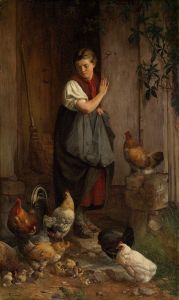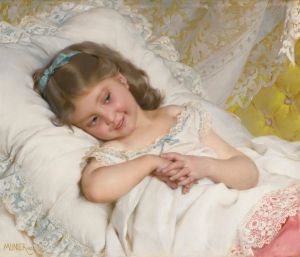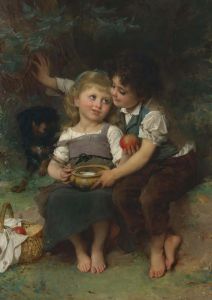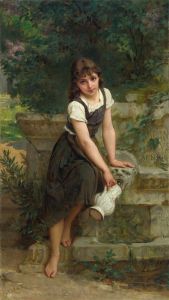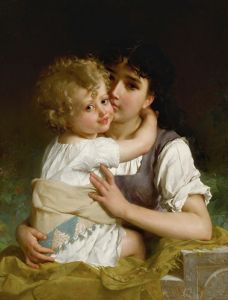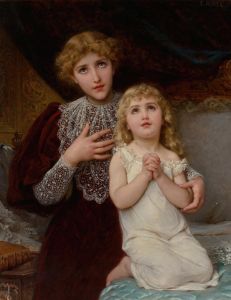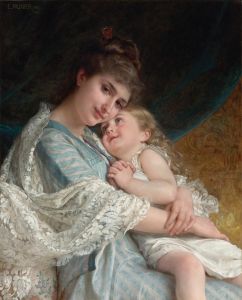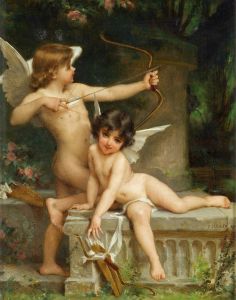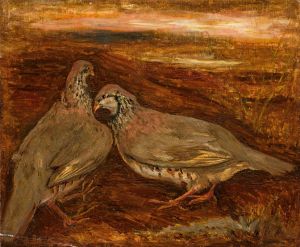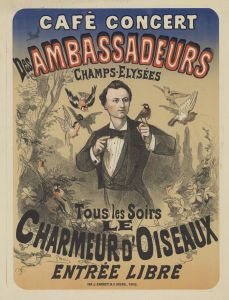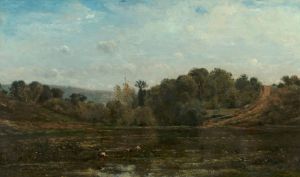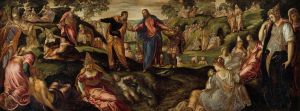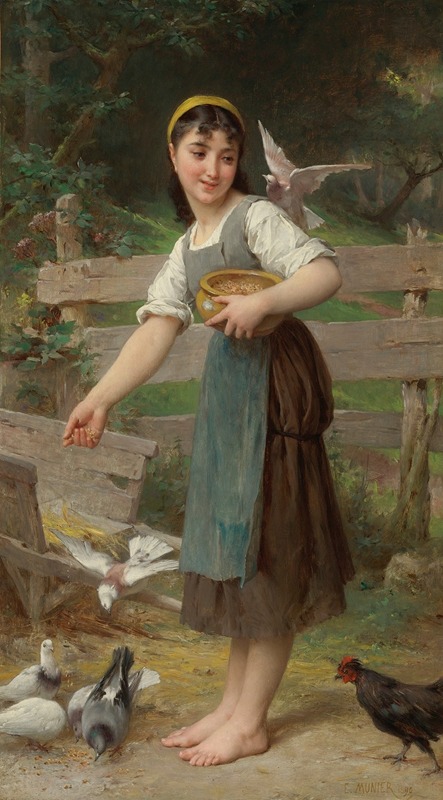
Feeding The Doves
A hand-painted replica of Émile Munier’s masterpiece Feeding The Doves, meticulously crafted by professional artists to capture the true essence of the original. Each piece is created with museum-quality canvas and rare mineral pigments, carefully painted by experienced artists with delicate brushstrokes and rich, layered colors to perfectly recreate the texture of the original artwork. Unlike machine-printed reproductions, this hand-painted version brings the painting to life, infused with the artist’s emotions and skill in every stroke. Whether for personal collection or home decoration, it instantly elevates the artistic atmosphere of any space.
Émile Munier was a French academic artist known for his detailed and realistic depictions of children and domestic scenes. One of his notable works is "Feeding the Doves," which exemplifies his skill in capturing tender moments with a high degree of technical proficiency.
"Feeding the Doves" is a painting that showcases Munier's characteristic style, which often includes themes of innocence and childhood. The painting typically features a young girl, often depicted in a serene and idyllic setting, engaging with doves. The composition is carefully arranged to highlight the interaction between the child and the birds, emphasizing a sense of harmony and tranquility.
Munier was a student of the renowned artist William-Adolphe Bouguereau, and his influence is evident in Munier's work. Like Bouguereau, Munier's paintings are marked by their smooth brushwork, attention to detail, and a soft, luminous quality that brings his subjects to life. "Feeding the Doves" is no exception, as it demonstrates Munier's ability to render textures and delicate features with precision.
The painting reflects the 19th-century European fascination with themes of innocence and the idealization of childhood. During this period, there was a cultural emphasis on the purity and simplicity of rural life, often depicted through the lens of childhood experiences. Munier's work fits within this context, offering viewers a glimpse into a peaceful and idealized world.
Munier's choice of subject matter and his meticulous technique made his paintings popular among art collectors of his time. His works were frequently exhibited at the Paris Salon, where they received positive attention from both critics and the public. "Feeding the Doves" would have been appreciated for its technical excellence and its ability to evoke emotion through a seemingly simple scene.
The painting's composition is balanced and harmonious, with the young girl often placed centrally, drawing the viewer's eye to her interaction with the doves. The use of light and shadow in the painting adds depth and dimension, enhancing the realism of the scene. Munier's attention to detail is evident in the rendering of the girl's clothing, the feathers of the doves, and the surrounding environment, all of which contribute to the overall effect of the painting.
While specific details about the provenance or current location of "Feeding the Doves" may not be widely documented, Munier's works are held in various private collections and occasionally appear in art auctions. His paintings continue to be appreciated for their beauty and technical mastery, and they remain a testament to the enduring appeal of 19th-century academic art.
In summary, "Feeding the Doves" by Émile Munier is a quintessential example of his artistic style, characterized by its focus on childhood innocence, meticulous detail, and harmonious composition. The painting reflects the broader cultural themes of its time and continues to be admired for its aesthetic qualities.





